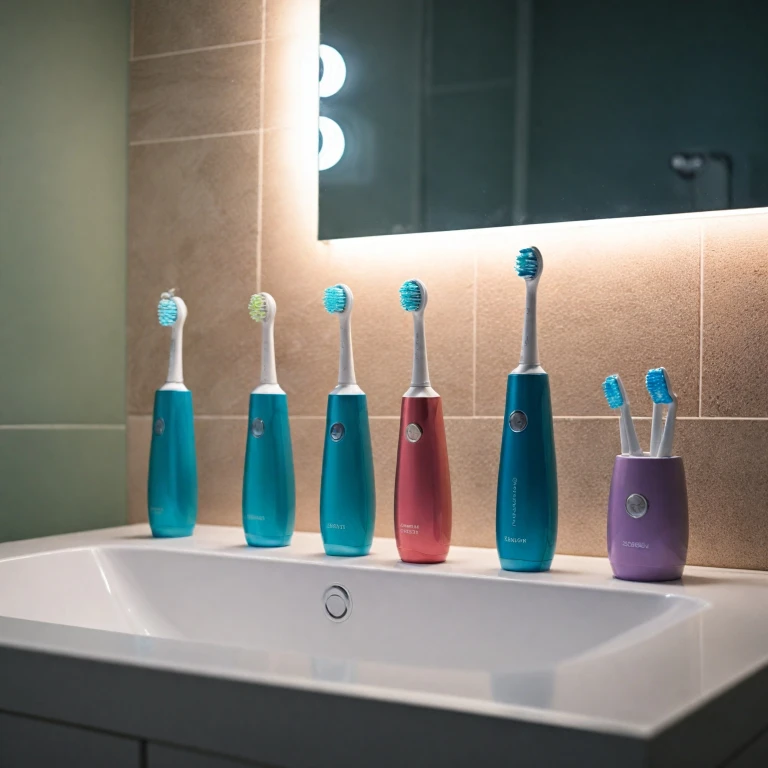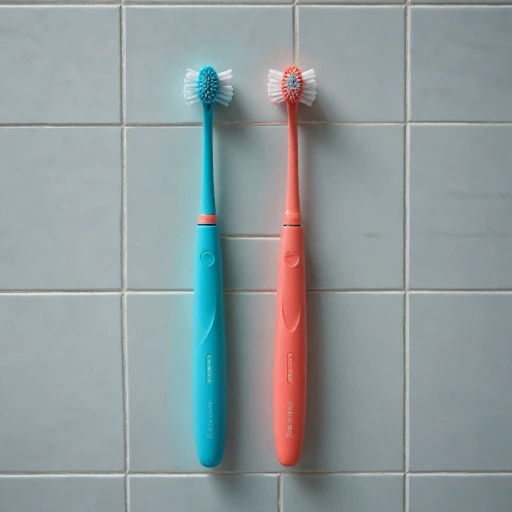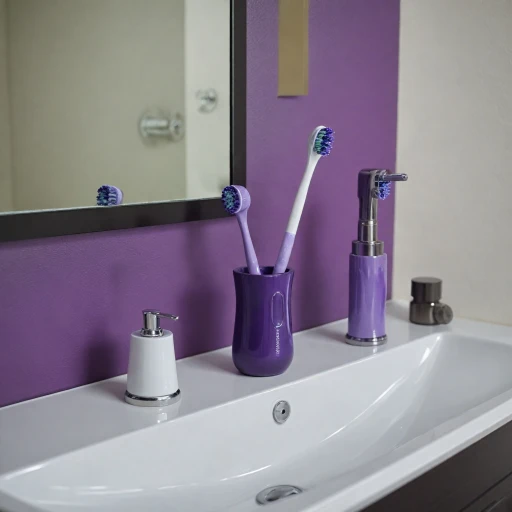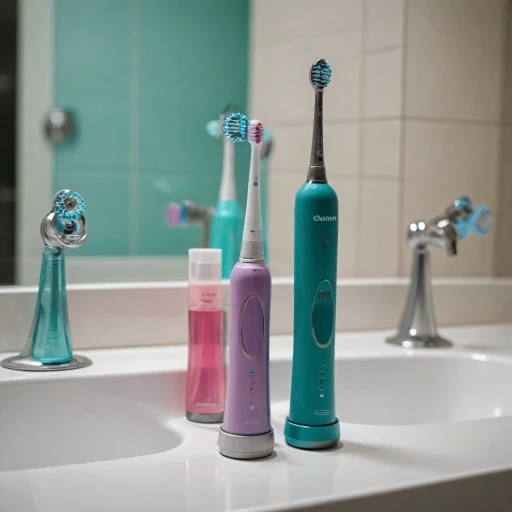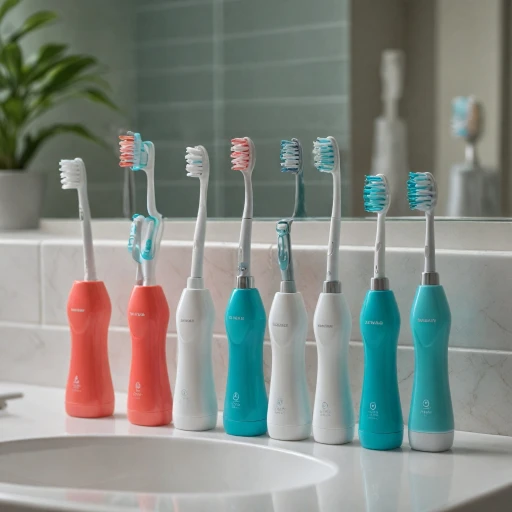Understanding Ultrasonic U-Shaped Electric Toothbrushes
Exploring the World of U-Shaped Electric Toothbrushes
The world of electric toothbrushes has seen various innovations in recent years, with the emergence of ultrasonic U-shaped designs capturing significant attention. These toothbrushes offer a unique approach to oral hygiene with an intriguing premise: hands-free brushing that adapts to your mouth's structure.
U-shaped toothbrushes specifically cater to those looking for convenience in their oral care routine. Designed to fit snugly around the teeth, these devices aim to simplify and enhance the cleaning process compared to traditional manual toothbrushes or even other electric toothbrushes. The brush head typically features nylon bristles that align with your teeth, effectively targeting every corner of your mouth to remove plaque and ensure thorough cleanliness.
Parents may find these toothbrushes appealing for kids, given the ease of use and reduced need for manual dexterity. It's worth noting that not every U-shaped toothbrush performs with the same efficiency, with some marked differences noticeable on platforms like Amazon, where customer reviews range in star ratings. As such, it's pivotal to evaluate the potential advantages, costs, and if your specific needs – whether it's tackling gum health problems or requiring replacement heads – align with what these devices offer.
For those navigating orthodontic challenges, selecting the right tool is crucial. Discover more about choosing appropriate options by accessing our guide on electric toothbrushes for orthodontic braces.
The Role of Foam Toothpaste
Importance of Toothpaste in Oral Care Routines
The role of toothpaste in oral care routines remains significant, whether you're using a manual toothbrush or an advanced electric toothbrush. Toothpaste plays a crucial part in effectively cleaning teeth, helping to remove plaque and food particles, and often contains fluoride to strengthen enamel and prevent decay. In the realm of electric toothbrushes, including the innovative ultrasonic U-shaped models, the choice of toothpaste can impact the overall brushing experience. Foam toothpaste, which creates a rich lather, is commonly used in traditional and electric brushing routines alike. The foaming action helps in the physical process of plaque removal alongside the mechanical brushing movement. However, when it comes to U-shaped autobrushes, the mechanics of brushing differ slightly. These mouthpiece toothbrushes are designed to clean teeth with minimal manual intervention. Given the unique shaped brush heads and their sonic action, it raises questions about the effectiveness and necessity of foam toothpaste in achieving oral cleanliness. For those wondering which toothpaste complements electric toothbrushes, especially if you have specific dental appliances, exploring resources like choosing the right electric toothbrush for dental braces can provide valuable insights. This ensures optimal cleaning and enhances oral health outcomes. Ultimately, whether you opt for foam or a non-foaming alternative, ensuring that your toothpaste contains essential ingredients to protect and clean effectively is key to maintaining excellent gum health and fresh breath.Compatibility with Ultrasonic U-Shaped Toothbrushes
Evaluating Foam Toothpaste Compatibility
When it comes to using ultrasonic U-shaped electric toothbrushes, the compatibility of foam toothpaste becomes a point of consideration. These toothbrushes, designed with innovative sonic technology, employ high-frequency vibrations to enhance plaque removal and overall oral care. While foam toothpaste might appear to be a natural fit, the interaction between toothpaste consistency and the sonic technology can influence the cleaning effectiveness. It's essential to note that the market offers a wide variety of electric toothbrush models, each with specific features and recommended usage guidelines. For instance, sonic electric toothbrushes such as the Philips Sonicare have gained popularity for their ability to promote better gum health with their intelligently designed brush heads and bristles. However, using foam toothpaste with a U-shaped toothbrush might not always yield the optimal results one would expect. The dense formula of traditional foam toothpaste can sometimes hinder the even distribution of the sonic vibrations, a phenomenon crucial for the toothbrush to reach all areas of the teeth effectively. Moreover, the toothbrush head design, especially in mouthpiece toothbrush models, may necessitate a toothpaste that ensures smooth spread across the teeth's surfaces. Considering these factors, users should assess whether their current toothpaste aligns with their oral care goals. For those exploring various toothbrush and toothpaste combinations, understanding the nuances of cleaning modes and the impact on regular and autobrush sonic models is key. Despite the broad usage of foam toothpaste in regular electric toothbrushes, shaped toothbrushes might require a reassessment of traditional oral care products to ensure they align with their advanced design and cleaning techniques. Explore our detailed guide on choosing the right ladies safety razor for your grooming routine to make informed decisions about personal care tools.Alternatives to Foam Toothpaste
Exploring Alternatives to Foam Toothpaste
When it comes to ultrasonic U-shaped electric toothbrushes, one common query is whether foam toothpaste is a necessity. However, there are various alternatives to consider if foam toothpaste isn't your preferred choice or if you're interested in experimenting with different brushing experiences. Let's explore some options that can complement your oral care routine. Firstly, gel toothpastes can be a great substitute for those using a U-shaped toothbrush. Their smooth texture allows the unique shape of the autobrush to glide efficiently over teeth surfaces, ensuring comprehensive clean teeth even at a regular price. With gel toothpaste, users may experience improved sonic cleaning modes, which can effectively reduce plaque and promote gum health. Another alternative is natural toothpaste. Often free from synthetic additives, natural toothpaste can be suitable for individuals who prefer a more organic approach to oral care. The gentle properties of natural toothpaste can be particularly appealing for kids using nylon bristles of U-shaped toothbrushes, promoting a balanced clean that supports gum health without abrasiveness. Moreover, some users might opt to apply mouthwash directly onto the brush heads instead of toothpaste. While this method may not provide the same brushing action as toothpaste with regular bristles, it does offer an opportunity for quick oral hygiene, particularly for those on-the-go moments. However, it’s important to consult with dental professionals to ensure that all oral care needs are being met through this practice. Finally, users who are adjusting to the innovative designs of sonic pro or mouthpiece toothbrushes might explore customized tooth cleaning solutions that are specifically designed for use with such devices. These solutions often come with recommendations from manufacturers to maximize the effectiveness of replacement heads and shaped toothbrushes. In conclusion, while foam toothpaste is popular among electric toothbrushes like Phillips Sonicare and similar products, there are plenty of viable alternatives available. By evaluating how these options can enhance your electric toothbrush experience, you'll be able to maintain excellent oral care, regardless of the tool or product you choose.User Experiences and Recommendations
User Insights and Feedback
To truly gauge the necessity of foam toothpaste with ultrasonic U-shaped electric toothbrushes, it's crucial to understand the experiences of those who use these devices regularly. Users, ranging from parents who have children acclimating to oral care, to tech enthusiasts intrigued by the latest cleaning modes, have conveyed varied opinions. Many users appreciate that these toothbrushes offer a hands-free approach with their mouthpiece design, offering convenience similar to products often featured with high ratings on platforms like Amazon. From a comfort standpoint, some users prefer the gentle cleaning provided by the sonic-bristled head, which significantly boosts gum health while efficiently removing plaque. However, a recurring concern lies with the efficacy of cleaning when foam toothpaste isn't used. Users accustomed to regular or sonic electric toothbrushes like the Philips Sonicare often mention that without the extra scrubbing power of foam toothpaste, the cleaning may not feel as comprehensive. Notably, the nature of the nylon bristles and their interaction with the oral cavity can also influence this perception. Among young users, especially kids and teenagers, the appeal of the shaped toothbrushes stems from their ease of use. They are particularly popular among children for whom the complete mouthpiece toothbrush minimizes the usual brushing effort. But here too, parents report experimenting with and sometimes preferring alternatives to foam toothpaste for better results. User recommendations often emphasize trying out different combinations of toothpaste types and cleaning modes to discover personal preferences. Replacement heads have also been cited as a critical factor in maintaining long-term effectiveness, ensuring the brush head is always in top condition for optimal clean teeth effects. In summary, while electric toothbrushes, especially the more innovative models, bring advanced oral care options to the everyday routine, user experiences point towards a nuanced understanding of what works best with each individual’s needs and the brushing tools they choose to use.Future Trends in Electric Toothbrush Technology
The Dawn of Next-Gen Oral Care
The landscape of toothbrush technology is evolving at an impressive pace, with innovations that promise enhanced oral care. As ultrasonic U-shaped electric toothbrushes continue to make waves in the market, several future trends are emerging. These developments are likely to reshape how we approach dental hygiene.- Adaptive Brushing Modes: There is a growing focus on personalization in brushing routines. Advanced toothbrushes are expected to feature adaptive modes that adjust based on the specific cleaning needs of a user's teeth and gum health. By utilizing sensors and advanced algorithms, these devices could automatically adjust intensity and duration for optimal cleaning outcomes.
- Integration with Oral Health Apps: Smart toothbrushes are increasingly being designed to pair with mobile apps, offering users the ability to track their brushing habits and receive real-time feedback. This integration is anticipated to include more detailed analytics on brushing efficiency, plaque removal, and improved gum care practices.
- Eco-Friendly Materials and Designs: As sustainability becomes a priority, manufacturers are focusing on eco-friendly materials for brush heads and bodies. This shift may involve biodegradable components or designs that contribute to less waste, offering an environmentally conscious choice for consumers.
- Enhanced Battery Life and Wireless Charging: Battery performance is a critical aspect of electric toothbrush convenience. Future models are predicted to boast longer battery lives and more efficient wireless charging capabilities, reducing the hassle of frequent charging and enhancing user experience.
- Advanced Bristle Technology: Innovations in bristle technology could lead to more effective plaque removal and healthier gums. This includes the development of sonic pro nylon bristles designed to work effectively with different toothpaste formulations, including foam toothpaste.
